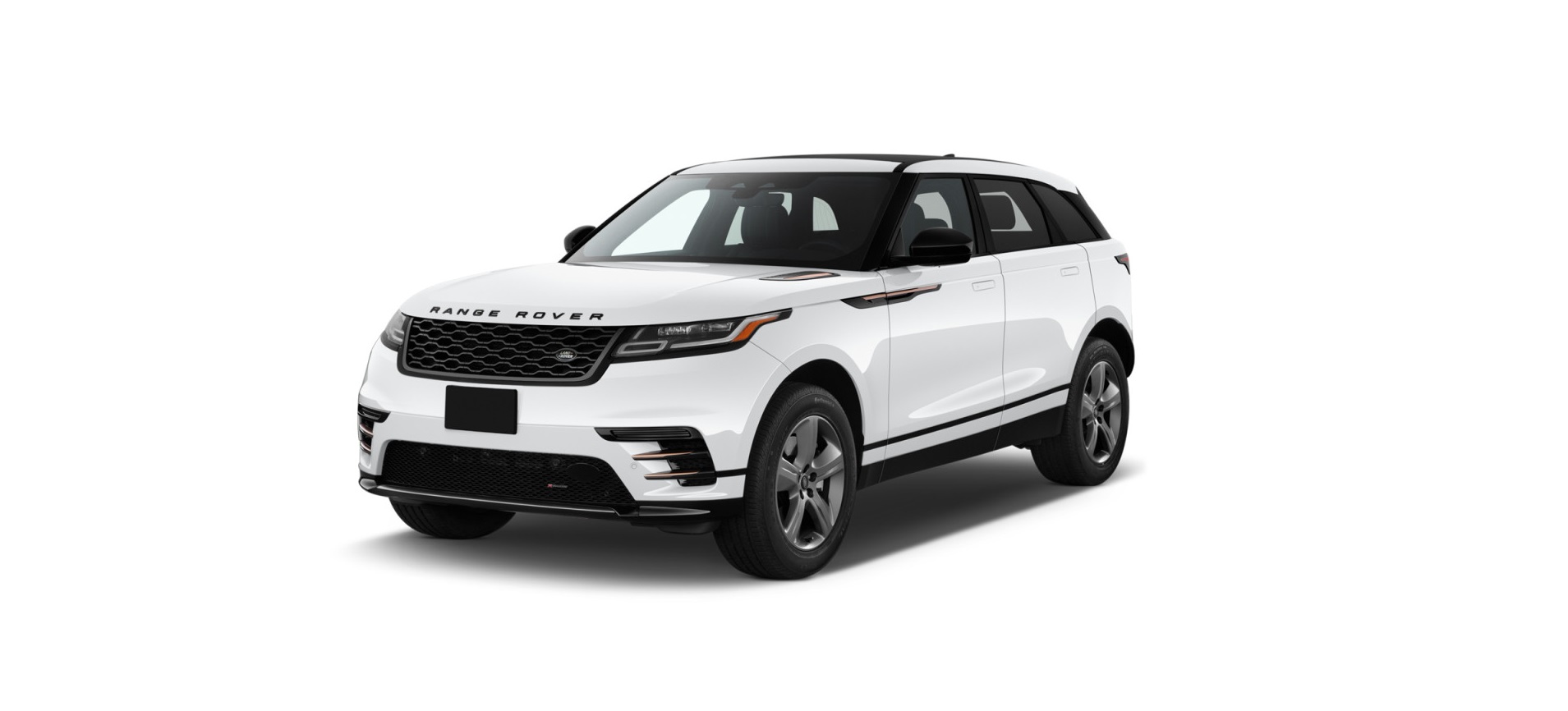2022 Land Rover Range Rover Velar Head Restraints

HEAD RESTRAINTS OVERVIEW
Head restraints are designed to support the head, not the back of the neck. The head restraint must be positioned correctly to restrain the rearward movement of the head in a collision. An incorrectly adjusted head restraint increases the risk of death or serious injury in the event of a collision.
While stationary, adjust the head restraint so that the top of the head restraint is above the centerline of the head. An incorrectly adjusted head restraint increases the risk of death or serious injury in the event of a collision.
Do not drive or carry passengers with the head restraints removed from occupied seats. The absence of a correctly adjusted head restraint increases the risk of neck injury in the event of a collision.
Never adjust the head restraints while the vehicle is in motion. Doing so could potentially cause a loss of vehicle control and personal injury.
Always store a removed head restraint securely. In the event of an accident, an unsecured object could potentially cause serious injury or death. Head restraints are fitted to all front and rear seats.
MANUAL HEAD RESTRAINTS
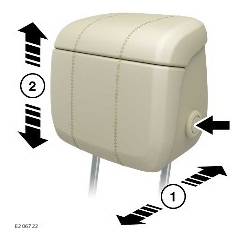
To adjust the head restraint position: Press the locking button on the side of the restraint. Simultaneously, move the restraint horizontally (1) and vertically (2) until the desired position is achieved.
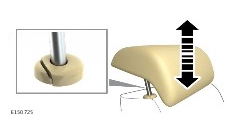
To raise or lower the rear head restraints fitted to a fixed rear seat:
- Pull upward and raise to the highest position. The head restraint locks into position.
- Press the button located on the stem collar and simultaneously push the head restraint downward to lower.
WINGED HEAD RESTRAINTS
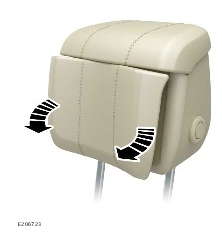
To adjust the head restraint wings: Pull the wings forward, or push them back until the desired position is achieved.
ELECTRIC HEAD RESTRAINTS
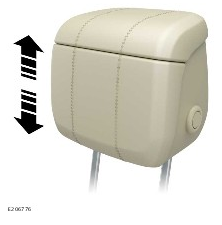
To adjust the head restraint: Use the switches on the side of the seat cushion to adjust the height of the head restraint. See ELECTRIC SEATS
HEAD RESTRAINT REMOVAL
Do not drive, or carry passengers with the head restraints removed from an occupied seat. The absence of a correctly adjusted head restraint increases the risk of neck injury in the event of a collision.
Always store a removed head restraint securely. In the event of an accident, an unsecured object could cause serious injury or death.
Manual head restraints can be removed if required. Electric head restraints cannot be removed.
Head restraints fitted with rear media screens must not be removed. Damage to the screens may result.
To remove a front head restraint:
Two people are required for this operation.
- Raise the head restraint to its highest position.
- Press down on each of the head restraint stem collars using two hands. The stem collars engage hidden buttons inside the seat.
- While the collars are pressed down, a second person can lift the head restraint out of the seatback.
To refit the head restraint, press the button on the side of the head restraint. While holding the button, press the stems into the head restraint as far as possible. Insert the head restraint stems into the seatback sockets and push downward until at least the first click.
To remove the head restraint, raise it to the highest position. Press the button on the collar and lift the head restraint out of the seatback.
To refit the head restraint, make sure it is facing the correct direction. Insert the head restraint stems into the seatback sockets and push downward until at least the first click.
Two people are required for this operation.
To locate the release tag, press down on the seat material in the area around the bottom of the head restraint collar.
To remove a rear head restraint fitted to a sliding rear seat:
- Raise the head restraint to its highest position. Press the release tag below the stem collar and simultaneously press the button on the other stem collar.
- A second person is now required to lift the head restraint out of the seatback.
To refit the head restraint, make sure it is facing the correct direction. Insert the head restraint stems into the seatback sockets and push downward until at least the first click.
